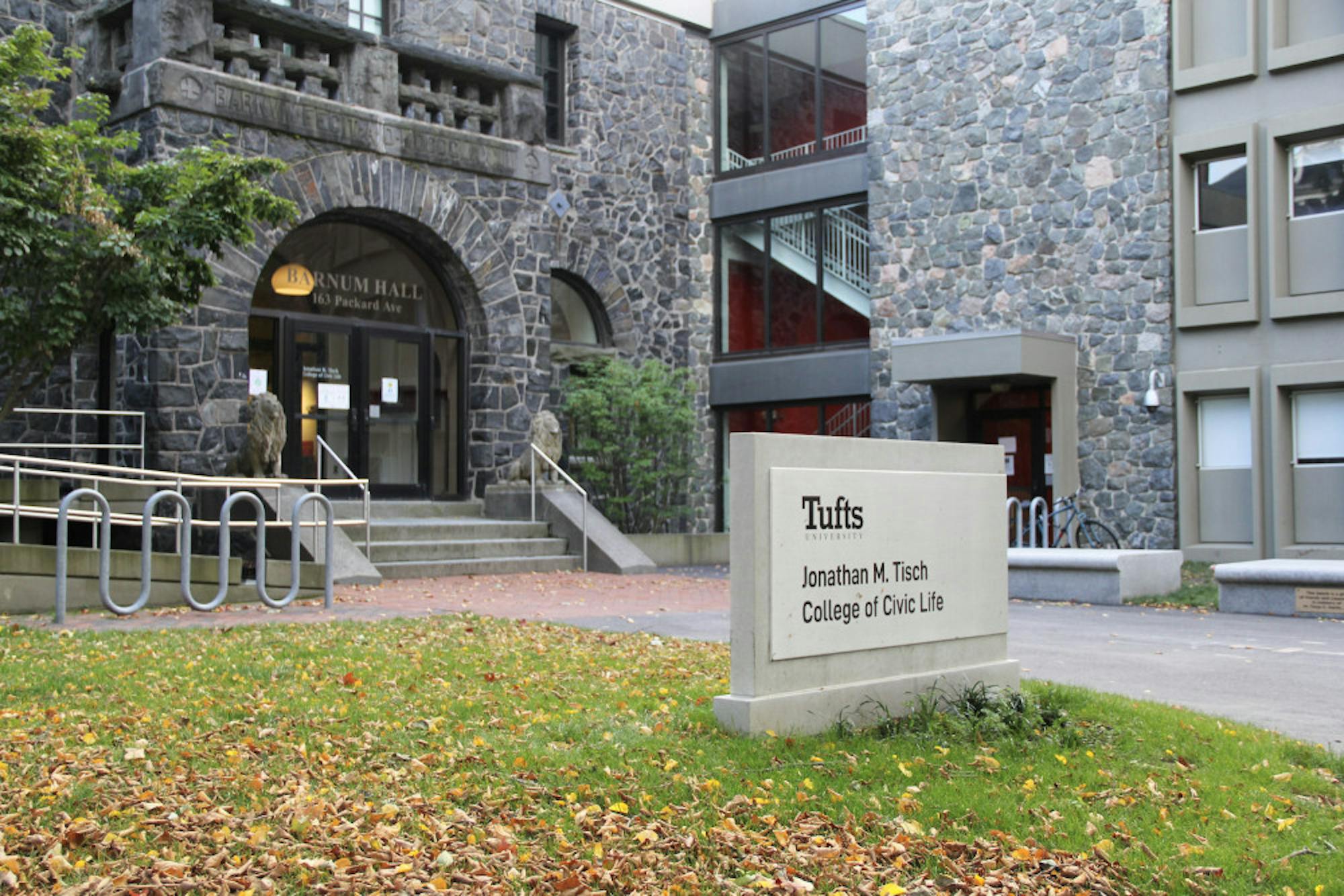HEADLINE: Authors Robert Putnam, Shaylyn Garrett discuss U.S. political, economic trends
Authors Robert Putnam and Shaylyn Garrett spoke to the Tufts community on Nov. 18 about their latest book, “The Upswing: How America Came Together a Century Ago and How We Can Do It Again” (2020).The event was sponsored by the Jonathan M. Tisch College of Civic Life, JumboVote, the Civic Studies program and the Department of Political Science.
“The Upswing” studies economic, social and political trends in the past century and demonstrates how the United States went from an individualistic “I” society to a more communitarian “we” society and then returned to individualism, according to the Tisch College website. It answers the question of how society can learn from its mistakes in the 20th century and become a more unified nation.
Peter Levine, associate dean of Tisch College and Lincoln Filene professor of citizenship and public affairs, moderated the event and introduced the speakers. He opened the discussion by asking the authors to describe their book’s thesis regarding the impact of social cohesion on societal trends.
Putnam began by explaining the United States’ current political climate.
“America [has] reached historic levels of anxiety and discontent along many different measures,” Putnam said.
He explained how society today embodies unprecedented levels of political polarization, economic inequality, social isolation and cultural self-centeredness.
"We are about as polarized politically as we have ever been in our national history, with the possible exception of the Civil War," he said.
Putnam placed society’s current hostility into context, presenting various graphs of political comity, economic inequality, social cohesion and cultural solidarity over the 20th century. Every set of data displayed a similar pattern, following the shape of a rough bell curve.
According to Putnam and Garrett, society was polarized and unequal in the early 1900s. As the 1960s approached, there was an upswing in bipartisan, equal and collaborative values, resulting in progressive reforms. However, society then regressed, with current trends mirroring exactly those of 125 years ago.
The authors attributed this trend to individualism, calling it the "I/we/I curve."
“[The graphs go from] individualism up to community and then back to individualism,” Putman said.
Society’s polarization and inequality are correlated with an individualistic culture. On the other hand, bipartisanship, economic equality and collaboration are associated with a communitarian society, according to Garrett and Putnam.
Garrett said that 20th century white progressives excluded racial equality from their list of priorities, specifically for African Americans. Although data sets demonstrated slow but unmistakable economic progress for African Americans between 1900 and 1970, growth stopped after 1970.
"What we call this subsequent period in the book is America’s foot off the gas period,” Garrett said. "We were driving toward racial equality, then all of a sudden, that drive stagnates, and in many cases, even reverses."
She said that one of the primary reasons for the stagnation was backlash to the civil rights movement.
“The survey data shows quite literally that when push came to shove, and it was time to make some rearrangements so that equal opportunity was a reality, white Americans were much less in favor of that,” Garrett said.
The resistance to racial equality was intertwined with the transition from “we” to “I,” as white Americans feared racial equality and turned to protect themselves, according to Garrett.
Garrett and Putnam emphasized the possibility of another upswing; however, they added that the mistakes made in history should not be repeated in creating another upswing.
Putnam discussed the power youth have to change the course of the United States.
“The way this country can make further progress in whatever direction we want to go is if … young people begin to recognize you have real choices,” Putnam said. “And if you make those choices, in connection with your peers, you could change America.”
The authors concluded the presentation with a hopeful message from Theodore Roosevelt.
“'The fundamental rule in our national life, the rule which underlies all others, is that, on the whole, and in the long run, we shall go up or down together,'" Garrett said.






